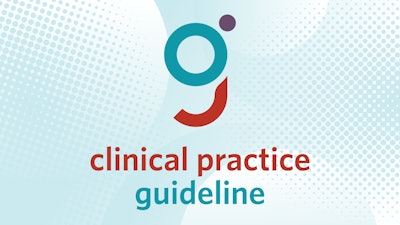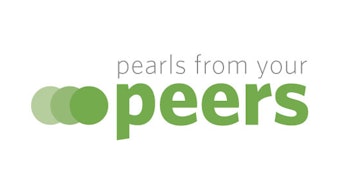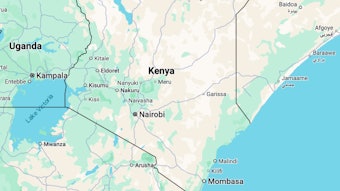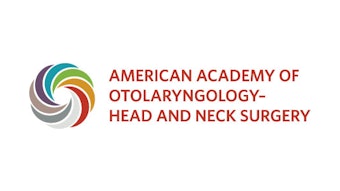Adapting Clinical Practice Guidelines for the Digital Age
A panel presentation from the AAO-HNSF 2025 Annual Meeting & OTO EXPO on the feasibility of digital, computable clinical practice guidelines (CPGs).
John M. Trumbo, MA, AAO-HNS/F Senior Writer

Partnering with the AAO-HNSF Research and Quality team, the presenters embarked on a feasibility study using the 2020 CPG for Ménière’s disease. The goals of the study were to: (1) apply a recently published integrated process for a computable CPG during the guideline update process; (2) assess readiness utilizing the CPG-FHIR (Fast Healthcare Interoperability Resources) Knowledge Level Checklists; and (3) perform a qualitative assessment of feasibility including opportunities and challenges through key stakeholder interviews.
The panel presentation was moderated by Maria Michaels, MBA, Immediate Past Chair of Guidelines International Network-North America Steering Committee, and included the following panelists: Margo K. McKenna, MD, AAO-HNSF Guideline Task Force Chair and Methodologist, Seth R. Schwartz, MD, MPH, Methodologist, and David E. Tunkel, MD, AAO-HNSF Guideline Task Force Immediate Past Chair and Methodologist.
Identified Challenge: Siloed Processes and Slow Adoption
Despite rigorous evidence synthesis and multidisciplinary collaboration, it still takes an average of 17 years for research findings to meaningfully influence clinical care. Current guideline development is largely sequential and fragmented. Panels produce written recommendations that are then interpreted—sometimes inconsistently—by informaticists, electronic health record (EHR) vendors, and quality measurement teams. Evaluation and feedback are sporadic, and the valuable lessons from real-world practice rarely make their way back to guideline authors.
This “spray-and-pray” approach, as one speaker wryly put it, depends on clinicians discovering and adopting guidelines on their own. While many practitioners access them through Google or the Academy website, accessibility and integration remain limited. Inconsistent health informatics standards further hinder the translation of CPGs into actionable, computable formats that could directly support clinical decision-making.
A New Model: Multidisciplinary and Iterative
The proposed solution is a reimagined development process that is parallel and iterative rather than sequential. Instead of creating guidelines, decision-support tools, and quality measures in isolation, multidisciplinary teams should co-develop them simultaneously. This integrated model would feature continuous feedback loops—from evidence generation to guideline creation, implementation, and real-world evaluation.
Such a system would allow guideline developers to see how their recommendations perform in practice, refine them based on data, and release updates dynamically rather than waiting years for formal revisions. This concept lays the foundation for “living guidelines”—continuously updated, digital-first documents that evolve alongside emerging evidence.
The Map Analogy: From Atlases to GPS
To illustrate the evolution of CPGs, the panel employed a compelling analogy: maps. Traditional paper guidelines are like printed road atlases—useful but static. Digitized, computable guidelines represent the next phase, akin to CD-ROM maps or early online mapping tools that allow for basic searches and navigation. The goal, however, is to reach the GPS stage—guidelines that provide real-time, context-specific recommendations within the EHR.
At this stage, a clinician entering a patient’s chart could receive instant, tailored prompts—such as antibiotic recommendations for bacterial sinusitis or guidance on vestibular testing for Ménière’s disease—based on structured algorithms that draw from the latest evidence. Like GPS systems recalculating routes based on traffic, these digital tools would adjust recommendations as new data becomes available.
“From a day-to-day perspective, it would be nice not to have to memorize all the guidelines and to have the EHR pop up with a note that says, ‘It sounds like this patient meets the criteria for acute bacterial rhinosinusitis. Would you like to prescribe amoxicillin or augmentin?’ That would be something very helpful in day-to-day practice,” said Dr. McKenna.
From Narrative to Computable Guidelines
Digitizing guidelines involves transforming narrative text into structured, executable formats that computers can interpret. The process begins with flowcharts and semi-structured tables, then advances toward fully computable algorithms tied to standardized coding systems such as ICD-10 and CPT.
The Academy’s pilot project using the 2020 Ménière’s disease CPG demonstrates this transformation. Developers deconstructed the guideline into “key process tables” outlining every clinical step, from diagnosis to management. Each step was mapped to data elements and codes—such as vertigo or audiogram orders—allowing real-world adherence to be tracked through registry data. This structured approach bridges the gap between written recommendations and measurable clinical behaviors.
Real-World Applications and Challenges
Clinicians on the panel described how they currently use CPGs in practice: to justify procedures, guide antibiotic duration, and support insurance appeals. However, much of this remains manual—reliant on memory, PDFs, or static summaries embedded in EHR “smart phrases.” Few systems offer otolaryngology-specific decision support, although examples exist in areas like infectious disease and pharmacy.
Dr. McKenna emphasized that the Academy’s ongoing digitization work aims to make guidelines simultaneously paper-based, computable, and executable, enabling seamless integration into clinical workflows. Mapping guideline steps to real-world data could reveal adherence patterns, identify educational gaps, and inform quality improvement initiatives.
AI and the “Living Guideline” Vision
Artificial intelligence (AI) emerged as both a catalyst and a challenge for the future of CPGs. AI offers the potential to automate systematic reviews, synthesize evidence continuously, and even monitor real-world data for signals that updates are needed. This could compress the timeline for guideline development from years to months—or even weeks.
Panelists agreed, however, that human oversight remains essential. AI can assist in evidence synthesis and pattern recognition but must be paired with expert validation to ensure accuracy, context, and clinical nuance. Their vision is a “learning health system” where AI helps maintain a virtuous cycle: evidence informs guidance, which shapes action, which generates new data—feeding back into the evidence base.
From Guidelines to Quality Improvement
The AAO-HNSF Reg-entSM Clinical Data Registry already tracks outcomes and procedure trends; integrating CPG logic could allow real-time feedback on compliance. Dashboards displaying a clinician’s adherence rates could promote transparency, benchmarking, and continuous improvement—without adding documentation burden.
Moreover, digital guidelines could simplify communication with insurers by linking coded recommendations directly to documentation, reducing administrative friction. For trainees and practicing physicians alike, integrated, computable guidance would eliminate the need to memorize lengthy statements, providing timely, evidence-based prompts at the point of care.
“Ultimately, what we’d really like to be able to do is integrate the concept of digitization into the guidelines as we move forward so that when the guideline is completed, not only do we have a paper guideline, but we also have a computable, executable form of it that we can then share and distribute. It doesn’t have to be seven years or 17 years or however long it is until what we have to say for people is in general practice,” said Dr. Schwartz.
The Road Ahead
The Academy’s pilot with the Ménière’s disease guideline offers proof of concept, demonstrating how local coding systems and registry integration can track adherence in real time. Future efforts will focus on embedding digitization into every new guideline from inception assuring that each publication yields not just a paper document but a living, computable asset ready for deployment in EHRs and decision-support systems.
Ultimately, digitization, AI, and real-time feedback promise to make CPGs what they were always meant to be: dynamic, actionable tools for improving patient care. As the panel concluded, the journey from “paper to practice” will require sustained collaboration, investment, and imagination—turning evidence into action.
AAO-HNSF CPGs can be found here, and include both physician and patient resources.
Disclosure: AI tools were used to capture and distill details of this presentation. All content has been edited and reviewed by humans.













